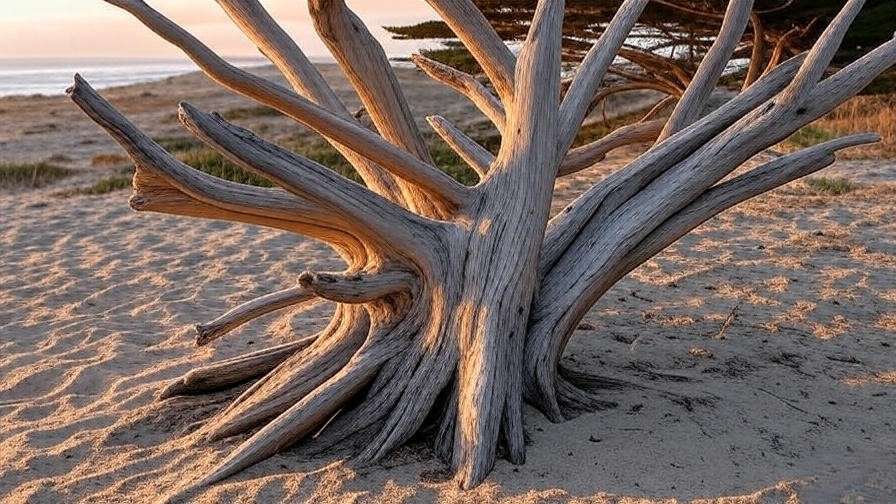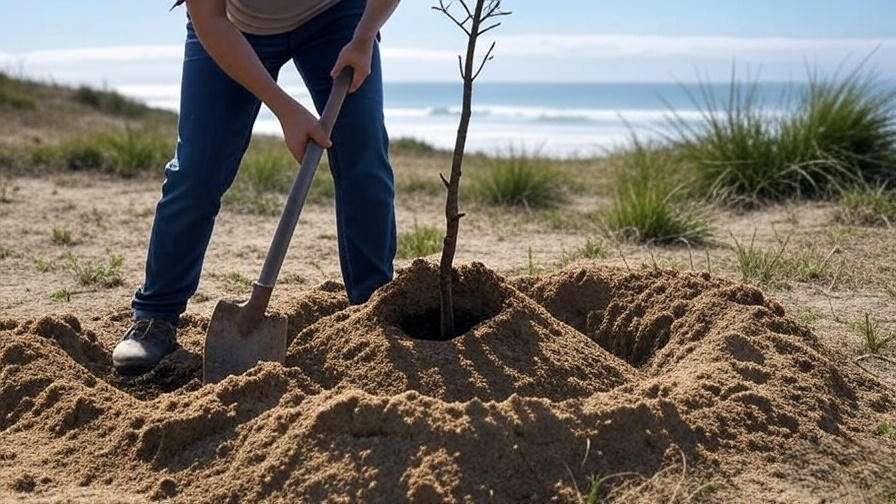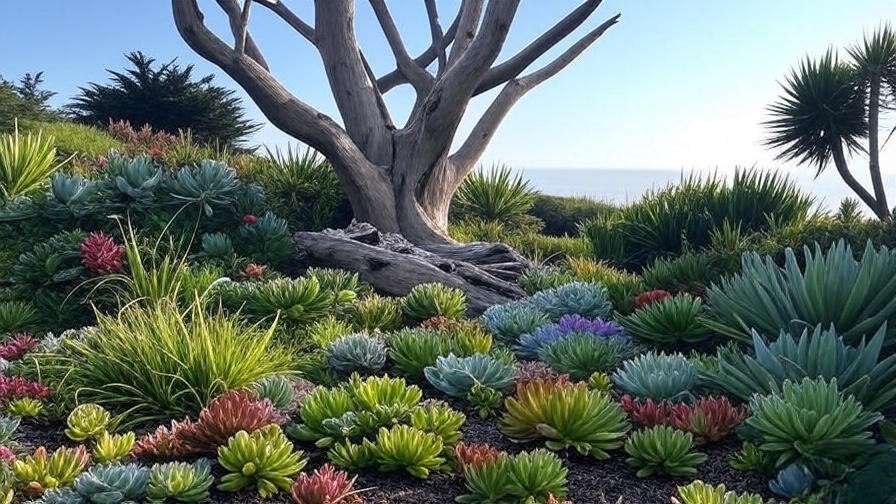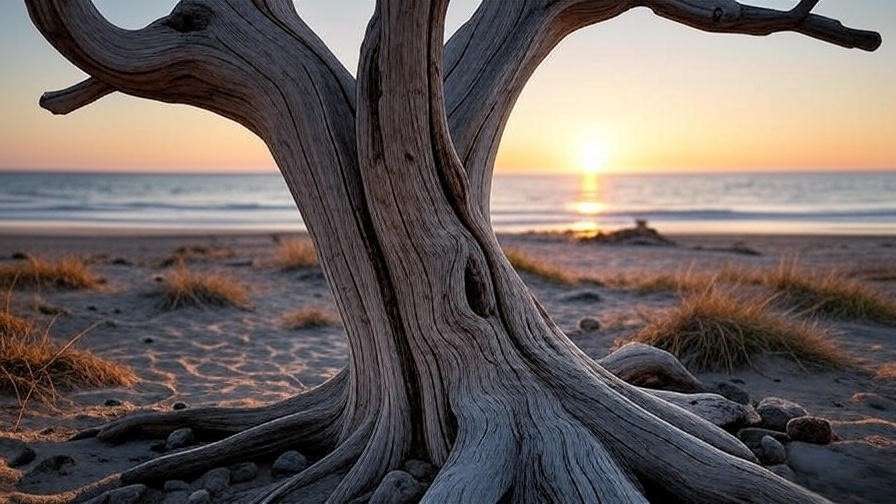Picture this: a gnarled, weathered driftwood tree standing proudly against a windswept coastal cliff, its twisted branches telling tales of salty breezes and relentless waves. These natural sculptures, often called driftwood trees, are more than just plants—they’re living art, blending rugged beauty with ecological significance. Whether you’re a coastal gardener or an enthusiast looking to bring this unique aesthetic to your backyard, caring for a driftwood tree can be both rewarding and challenging. In this comprehensive guide, we’ll share expert tips to ensure your driftwood tree thrives, addressing its unique needs with practical, actionable advice. From planting to pruning, we’ve got you covered!
As a horticulturist with over a decade of experience in coastal plant care, I’ve worked with driftwood trees in various settings, from windswept shores to urban gardens. Drawing on insights from botanical studies and hands-on expertise, this article will empower you to nurture these coastal beauties with confidence. Let’s dive into the world of driftwood tree care and unlock the secrets to their longevity and charm! 🌞
What Is a Driftwood Tree? 🌴
A driftwood tree isn’t a single species but a term for trees shaped by coastal environments into sculptural, weathered forms that resemble driftwood. Think of Monterey cypress trees clinging to California cliffs or mangroves sculpted by tropical tides. These trees, often species like cedars, pines, or coastal oaks, adapt to harsh conditions—salty air, sandy soils, and relentless winds—resulting in their iconic, twisted appearance.

Unique Characteristics
Driftwood trees are defined by their gnarled branches, smooth, weathered bark, and compact growth patterns. Their aesthetic appeal lies in their ability to thrive where other plants struggle, making them a favorite for coastal landscapers and bonsai enthusiasts. Ecologically, they stabilize soil, prevent erosion, and provide habitats for coastal wildlife.
Popular Species
- Monterey Cypress (Cupressus macrocarpa): Known for its dramatic, wind-swept silhouette.
- Coastal Pine (Pinus contorta): Hardy and adaptable to sandy soils.
- Mangroves: Tropical driftwood trees that thrive in saline water.
- Driftwood Bonsai: Decorative, weathered wood shaped into miniature trees for indoor use.
Why They’re Special
Driftwood trees bring a raw, natural beauty to gardens, evoking the wildness of the coast. Their resilience makes them ideal for sustainable landscaping, while their unique forms make them focal points in any setting. Whether in a seaside garden or a container, they’re a testament to nature’s artistry.
Understanding the Needs of Driftwood Trees 🌞
To care for a driftwood tree, you must replicate its natural coastal habitat. These trees thrive in conditions that mimic their rugged origins, but they also face unique challenges that require careful attention.
Environmental Requirements 🌬️
- Climate and Location: Driftwood trees prefer temperate to warm coastal climates with high salinity and wind exposure. If you’re inland, you’ll need to mimic these conditions with strategic placement.
- Sunlight Needs: Full sun (6–8 hours daily) is essential for vibrant growth and to maintain their compact, sculpted form.
- Soil Preferences: Well-draining, sandy, or rocky soils are ideal. Avoid heavy clay, which retains too much water and can suffocate roots.
Challenges of Driftwood Tree Care ⚠️
- Salt and Wind Exposure: While driftwood trees are adapted to salt spray, excessive buildup can stress them. Wind can also destabilize young trees.
- Watering Needs: Balancing hydration in saline environments is tricky—overwatering leads to root rot, while under-watering causes stress.
- Pest and Disease Risks: Coastal conditions can foster fungal infections or attract pests like scale insects, especially in humid climates.
Step-by-Step Driftwood Tree Care Guide 🌱
1. Selecting the Right Driftwood Tree 🪵
Choosing a healthy driftwood tree is the foundation of successful care. Look for specimens with vibrant foliage, strong root systems, and no signs of disease (e.g., yellowing leaves or brittle branches).
- Native vs. Non-Native Species: Native species like coastal pines are easier to maintain in their natural habitat, while non-native varieties may require extra care to replicate coastal conditions.
- Where to Buy: Source from reputable nurseries specializing in coastal plants. For wild harvesting, ensure you have permits and follow local regulations to avoid environmental harm.
2. Planting Your Driftwood Tree 🌍
Proper planting sets the stage for a thriving tree.
- Site Selection: Choose a sunny, open spot with good air circulation. If inland, place the tree where it can catch breezes to mimic coastal winds.
- Soil Preparation: Amend soil with sand or gravel to improve drainage. A mix of 50% sand, 30% loam, and 20% organic compost works well. Test soil pH (aim for 6.0–7.5) to ensure nutrient availability.
- Planting Techniques: Dig a hole twice as wide as the root ball but no deeper. Place the tree so the root crown sits slightly above ground level. Stake young trees to protect against wind until roots establish.

3. Watering and Feeding 💧
Driftwood trees require careful watering and fertilization to thrive in nutrient-poor soils.
- Watering Schedule: Water deeply but infrequently—once every 7–10 days in summer, less in winter. Check soil moisture 2 inches deep; water only if dry.
- Fertilization Tips: Use a slow-release, low-nitrogen fertilizer (e.g., 10-10-10) in spring to support growth without encouraging weak, leggy branches. Avoid over-fertilizing, which can burn roots in sandy soils.
- Expert Insight: Coastal horticulturist Dr. Jane Ellis advises, “Stick to minimal fertilization—driftwood trees are adapted to lean soils, and too many nutrients can disrupt their natural balance.”
4. Pruning and Shaping ✂️
Pruning enhances the driftwood tree’s sculptural form while promoting health.
- Maintaining Aesthetic Form: Prune lightly to accentuate natural twists and curves. Remove dead or crossing branches to improve air circulation.
- Timing and Tools: Prune in late winter or early spring before new growth starts. Use sharp, sterilized pruning shears for clean cuts.
- Safety Tips: Avoid removing more than 20% of the canopy at once to prevent stress, especially in wind-exposed areas.

5. Protecting Against Environmental Stress 🛡️
Coastal conditions can be harsh, but strategic care keeps driftwood trees resilient.
- Wind Protection: Install temporary windbreaks (e.g., burlap screens) for young trees. Stake securely but allow some movement to strengthen roots.
- Salt Spray Management: Rinse foliage monthly with fresh water to remove salt buildup, especially after storms.
- Winter Care: In colder coastal regions, mulch around the base with 2–3 inches of organic material (e.g., bark chips) to insulate roots.
Common Driftwood Tree Problems and Solutions 🐞
Issue 1: Yellowing or Browning Foliage 🍂
- Causes: Overwatering, nutrient deficiencies, or excessive salt accumulation.
- Solutions: Adjust watering to ensure soil dries out between sessions. Test soil for nutrient levels and apply a balanced fertilizer if needed. Rinse leaves to remove salt.
Issue 2: Pest Infestations 🕷️
- Common Pests: Scale insects and spider mites thrive in coastal humidity.
- Organic Control Methods: Apply neem oil or insecticidal soap weekly until pests are gone. Introduce ladybugs for natural pest control.
3. Fungal Infections 🍄
- Symptoms: Blackened branches or spotty leaves.
- Prevention and Treatment: Improve air circulation by thinning dense foliage. Apply a copper-based fungicide for severe cases and remove affected parts promptly.
Creative Uses for Driftwood Trees in Landscaping 🎨
Driftwood trees are not just plants—they’re living sculptures that can transform any space into a coastal masterpiece. Their unique, weathered forms make them versatile for various landscaping styles, from rugged seaside gardens to minimalist urban patios.
- Garden Focal Points: Use a driftwood tree as the centerpiece of a coastal or xeriscape garden. Surround it with low-growing succulents or native grasses to highlight its sculptural form. For example, a Monterey cypress paired with sea lavender creates a striking contrast.
- Bonsai and Indoor Use: Smaller driftwood trees or driftwood-inspired bonsai can thrive in containers, making them ideal for patios or indoor spaces. Use a shallow, wide pot with well-draining soil to mimic their natural habitat. Ensure they get ample sunlight near a south-facing window.
- Eco-Friendly Landscaping: Driftwood trees play a vital role in coastal ecosystems by stabilizing soil and preventing erosion. Incorporate them into sustainable garden designs to support biodiversity. For instance, planting mangroves near water features can attract birds and marine life.
- Case Study: A coastal garden in Big Sur, California, featured in Coastal Living Magazine, showcases a cluster of driftwood-style Monterey cypresses surrounded by native dune grasses. The design not only enhances the property’s aesthetic but also supports local wildlife, proving the ecological and visual value of these trees.

Expert Tips for Long-Term Success 🌟
To ensure your driftwood tree thrives for years, follow these expert-backed strategies:
- Seasonal Maintenance Checklist:
Season Task Spring Fertilize lightly, prune dead branches, check for pests 🌸 Summer Water deeply every 7–10 days, rinse foliage for salt buildup ☀️ Fall Mulch roots, inspect for fungal signs 🍂 Winter Reduce watering, protect roots in cold climates ❄️ - Sourcing Quality Trees: Purchase from nurseries specializing in coastal plants, such as Pacific Nurseries in California or online retailers like Plant Delights. For wild harvesting, always obtain permits and consult local conservation guidelines to avoid damaging ecosystems.
- Community Wisdom: Gardeners on X share practical tips for driftwood tree care, such as using seaweed-based fertilizers for a natural nutrient boost. One user noted, “My coastal pine doubled in vigor after monthly seaweed sprays!” Check platforms like r/gardening on Reddit for more community insights.

FAQs About Driftwood Tree Care ❓
Here are answers to common questions to help you care for your driftwood tree with confidence:
- What makes a driftwood tree different from other trees?
Driftwood trees are shaped by coastal conditions—salty air, wind, and sandy soils—giving them a unique, weathered appearance. Their adaptations make them resilient but require specific care compared to standard trees. - Can I grow a driftwood tree in a non-coastal area?
Yes, with effort! Mimic coastal conditions by using sandy soil, ensuring full sun, and simulating wind exposure with fans or open spaces. Regular rinsing of foliage can replicate salt spray management. - How often should I water my driftwood tree?
Water every 7–10 days in warm months, allowing soil to dry between sessions. Reduce to every 2–3 weeks in winter, depending on rainfall and soil drainage. - What are the best fertilizers for driftwood trees?
Opt for slow-release, low-nitrogen fertilizers (e.g., 10-10-10) applied in spring. Seaweed-based or organic options are ideal for mimicking coastal nutrients. - How do I protect my driftwood tree from storms?
Stake young trees, use windbreaks like burlap screens, and ensure roots are well-established. After storms, rinse foliage to remove excess salt and check for structural damage.
Conclusion: Growing Your Driftwood Tree with Confidence 🌴
Caring for a driftwood tree is a journey of patience and creativity, rewarding you with a living piece of coastal art. By understanding their unique needs—sandy soils, full sun, and careful watering—you can help these resilient beauties thrive in any setting. From planting to pruning, this guide has equipped you with expert insights to tackle common challenges and enhance your tree’s natural charm. Whether you’re crafting a seaside garden or a bonsai masterpiece, your driftwood tree will stand as a testament to nature’s resilience and beauty.
Ready to start your driftwood tree adventure? Share your progress in the comments, connect with fellow gardeners on X, or explore our related articles on coastal plant care for more inspiration. Let’s grow these coastal treasures together! 🌊













